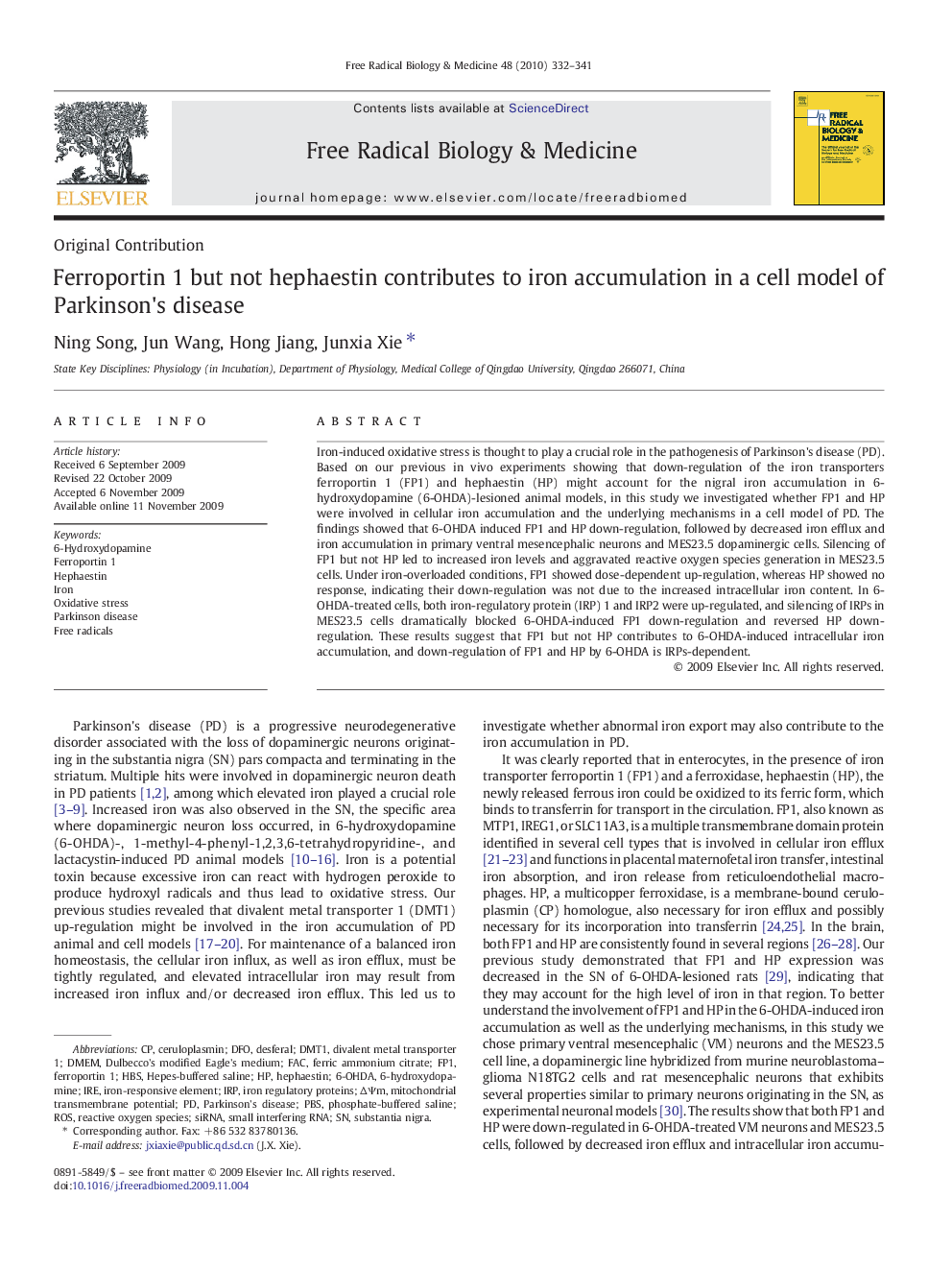| Article ID | Journal | Published Year | Pages | File Type |
|---|---|---|---|---|
| 1909544 | Free Radical Biology and Medicine | 2010 | 10 Pages |
Iron-induced oxidative stress is thought to play a crucial role in the pathogenesis of Parkinson's disease (PD). Based on our previous in vivo experiments showing that down-regulation of the iron transporters ferroportin 1 (FP1) and hephaestin (HP) might account for the nigral iron accumulation in 6-hydroxydopamine (6-OHDA)-lesioned animal models, in this study we investigated whether FP1 and HP were involved in cellular iron accumulation and the underlying mechanisms in a cell model of PD. The findings showed that 6-OHDA induced FP1 and HP down-regulation, followed by decreased iron efflux and iron accumulation in primary ventral mesencephalic neurons and MES23.5 dopaminergic cells. Silencing of FP1 but not HP led to increased iron levels and aggravated reactive oxygen species generation in MES23.5 cells. Under iron-overloaded conditions, FP1 showed dose-dependent up-regulation, whereas HP showed no response, indicating their down-regulation was not due to the increased intracellular iron content. In 6-OHDA-treated cells, both iron-regulatory protein (IRP) 1 and IRP2 were up-regulated, and silencing of IRPs in MES23.5 cells dramatically blocked 6-OHDA-induced FP1 down-regulation and reversed HP down-regulation. These results suggest that FP1 but not HP contributes to 6-OHDA-induced intracellular iron accumulation, and down-regulation of FP1 and HP by 6-OHDA is IRPs-dependent.
